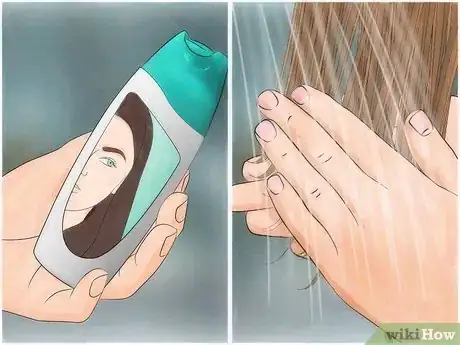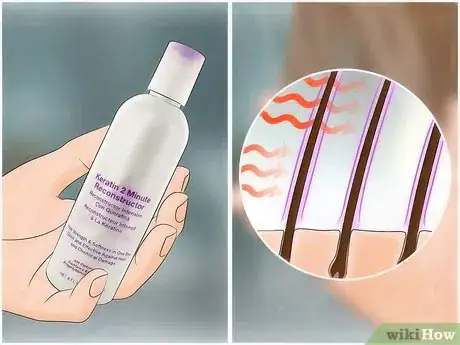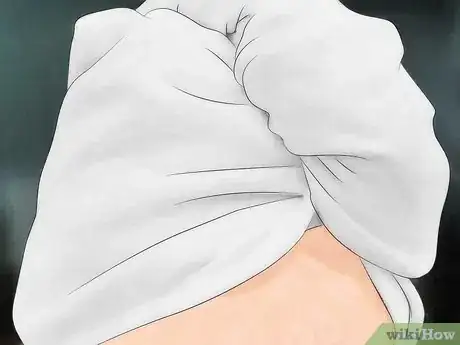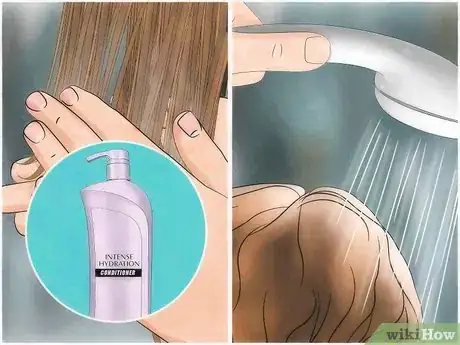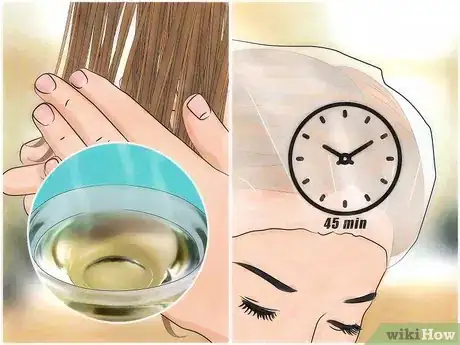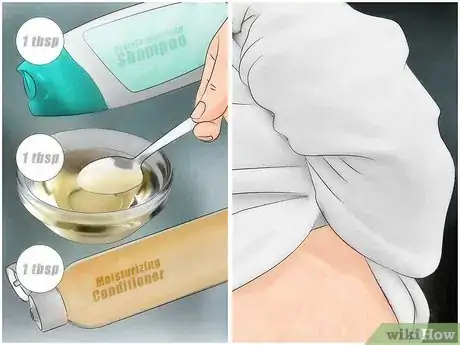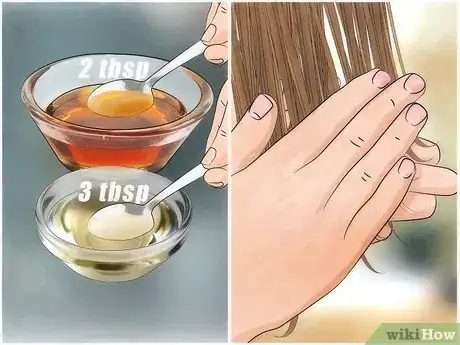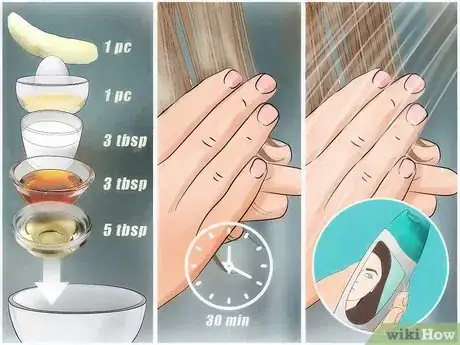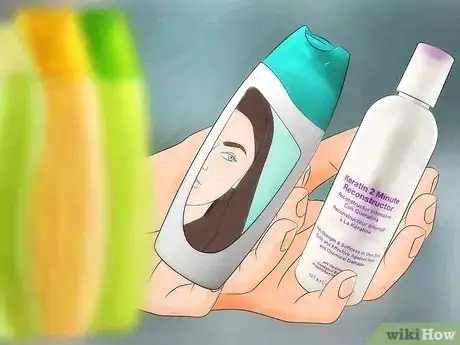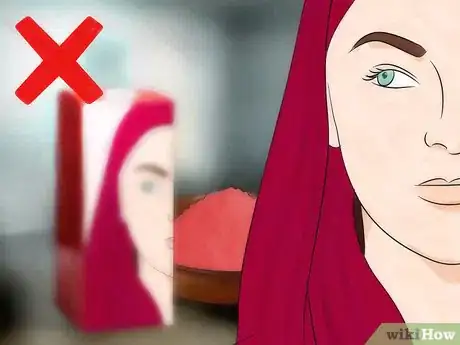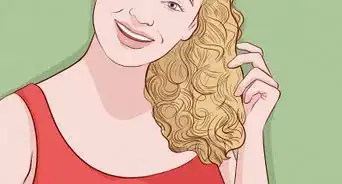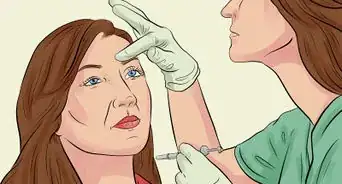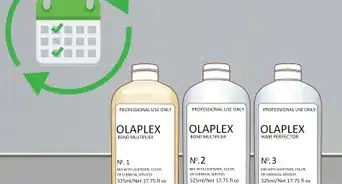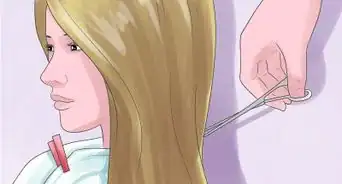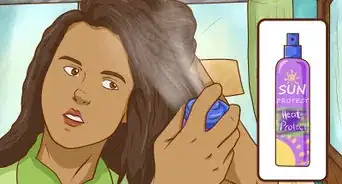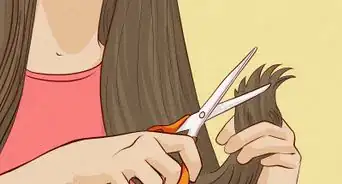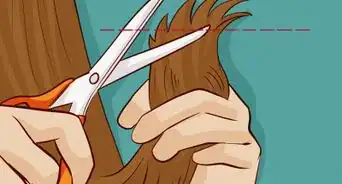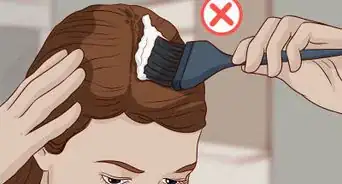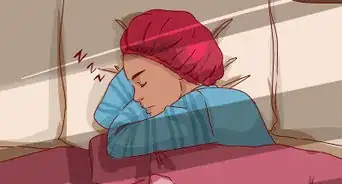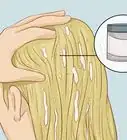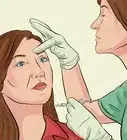This article was co-authored by Yan Kandkhorov. Yan Kandkhorov is a Hair Stylist and Owner of K&S Salon, a hair salon based in New York City's Meatpacking District. Yan has over 20 years of experience in the hair industry, is best known for paving the way for iconic hair trends in the industry, and has operated his salon since 2017. His hair salon has been voted one of the Best Hair Salons in New York City in 2019 by Expertise. Yan and K&S Salon has collaborated with leading fashion magazines and celebrities such as Marie Clair USA, Lucy Magazine, and Resident Magazine.
There are 9 references cited in this article, which can be found at the bottom of the page.
wikiHow marks an article as reader-approved once it receives enough positive feedback. In this case, 94% of readers who voted found the article helpful, earning it our reader-approved status.
This article has been viewed 275,569 times.
Many people suffer from hair that is damaged or burnt by various harsh chemical treatments like coloring and straightening. After years of damage, it can sometimes seem like there is no hope for chemically burnt hair. But by enlisting the help of a professional stylist or by performing a few at-home hair care maintenance rituals, you can begin your journey to healthier and stronger hair.
Steps
Treating Chemically Burnt Hair at Home
-
1Wash your hair with a good quality shampoo. This means a salon-quality shampoo made with high-quality active ingredients. Spend some time looking at the list of ingredients and choose one based on the contents, not just the name brand.
- Avoid ingredients like sulfates (ammonium lauryl sulfate, ammonium laureth sulfate, and sodium lauryl sulfate), isopropyl alcohol, formaldehyde, and propylene glycol. These ingredients will dry out your hair, break down healthy hair proteins, and leave your hair prone to more damage in the future.[1]
- Look for ingredients like sodium cocoyl isethionate, sodium lauroyl methyl isethionate, and disodium laureth sulfosuccinate. These compounds are gentler than the sulfates used in many cheaper shampoos and are derived from more natural ingredients like coconut oil.[2]
- You can also choose shampoos that contain glycerin and panthenol. Glycerin helps fortify your hair by creating a protective barrier and panthenol allows your hair to retain more moisture and thickens the hair follicles.
-
2Apply a deep penetrating reconstructor shampoo. This kind of shampoo will help fortify your hair by creating a barrier between the hair and any heat you may apply to your hair (through blow drying, straightening, etc.). Leave it in your hair for five minutes and then rinse it out.
- Alternate between using this shampoo and your other high-quality shampoo. Don't use both during the same shower. Over-washing your hair can leave it drier and damaged in the long run.
Advertisement -
3Gently towel dry your hair. You want to make sure you allow your hair to fully absorb the products in each of these steps. Towel drying your hair will help it soak up the benefits of the shampoo treatments before moving on to the conditioning steps.
-
4Apply an intense hydration conditioner. These kinds of conditioners will work to restore the hydrolipidic barrier and prevent future dehydration in your hair.[3]
- Normally, these are not leave-in conditioners. You will typically apply the conditioner to your hair while it's wet, massage the conditioner into your scalp, and then rinse it out.
Using DIY Remedies to Treat Chemically Burnt Hair
-
1Use a hot oil treatment with a plastic wrap. These kinds of treatments can help your hair regain some its original shine and moisture. But using too much oil in your hair can make your hair look greasy, so be careful not to overdo it. Usually, 1-3 times a month is enough for this kind of treatment.[4]
- Heat up 1⁄2 cup (120 mL) of an essential oil, such as olive oil or coconut oil, so that it is warm to the touch, but not boiling, and massage it into your hair. If you don't heat the oil right away, apply it to your hair, put on a shower cap, and you sit underneath a hairdryer.
- Cover your hair with a plastic wrap (or even a shower cap if you don't have a plastic wrap) and leave it in for 30-45 minutes, depending on the severity of your hair's damage.
- When you are finished, rinse the oil out of your hair with lukewarm water.
-
2Use a conditioning oil mask to moisturize your hair. Mix together one tablespoon of a protein-enriching shampoo, 1 tablespoon (15 mL) of extra virgin olive oil, and 1 tablespoon (15 mL) of a moisturizing conditioner.[5]
- Massage the mixture into your scalp and leave it in as a mask for your hair.
- Cover your hair with a plastic bag, then wrap it all up in a towel.
- Leave the mixture in for 20 minutes, then rinse your hair clean.
-
3Use honey and olive oil to help damaged hair. Combine 2 tablespoons (14 g) of honey with 3 tablespoons (44 mL) of extra virgin olive oil. Apply the mixture to your damp hair, making sure to rub it into your scalp completely and pull it down towards the ends of your hair.[6]
- After you have saturated your hair with the mixture, wrap it in a towel.
- Leave it in for 30 minutes to 1 hour, depending on the amount of damage your hair has. Then rinse with warm water.
- Wash out any remnants with a mild shampoo.
- You can adjust the measurements of the ingredients based on the length of your hair. For example, if you have longer hair you may want to use 4 tablespoons (28 g) of honey and 6 tablespoons (89 ml) of extra virgin olive oil.
-
4Make a hair mask out of banana and honey. This particular mask will work to restore dry and damaged hair and is mild enough to use twice a week.[7]
- In a bowl, mix together 1 mashed banana, 1 raw egg, 3 tablespoons (44 ml) of milk, 3 tablespoons (21 g) of honey, and 5 tablespoons (74 ml) of olive oil.
- Apply the mixture to your hair thoroughly and leave it in for 15-30 minutes.
- Rinse your hair with cool water and a mild shampoo.
Preventing Future Chemical Burns For Your Hair
-
1Change your hair care products. Switching it up can help your hair recover from existing damage and prevent future damage. Try using products that hydrate your hair – like a moisturizing shampoo and conditioner.[8]
- You can also try products with a protein or keratin reconstructor to help fortify your hair.
-
2Avoid coloring your hair or using other harsh chemicals treatments. If you are serious about preventing future damage to your hair from harmful chemicals, you should avoid them altogether when possible. While they may look nice for a while, they only cause damage in the end. Avoid using these damaging chemical treatments to help prevent future trouble for your hair.[9]
- If you have to dye your hair, try using a more natural dye like henna or tea. This will cause much less damage.
-
3
Expert Q&A
Did you know you can get expert answers for this article?
Unlock expert answers by supporting wikiHow
-
QuestionHow do you prevent burnt hair?
 Yan KandkhorovYan Kandkhorov is a Hair Stylist and Owner of K&S Salon, a hair salon based in New York City's Meatpacking District. Yan has over 20 years of experience in the hair industry, is best known for paving the way for iconic hair trends in the industry, and has operated his salon since 2017. His hair salon has been voted one of the Best Hair Salons in New York City in 2019 by Expertise. Yan and K&S Salon has collaborated with leading fashion magazines and celebrities such as Marie Clair USA, Lucy Magazine, and Resident Magazine.
Yan KandkhorovYan Kandkhorov is a Hair Stylist and Owner of K&S Salon, a hair salon based in New York City's Meatpacking District. Yan has over 20 years of experience in the hair industry, is best known for paving the way for iconic hair trends in the industry, and has operated his salon since 2017. His hair salon has been voted one of the Best Hair Salons in New York City in 2019 by Expertise. Yan and K&S Salon has collaborated with leading fashion magazines and celebrities such as Marie Clair USA, Lucy Magazine, and Resident Magazine.
Professional Hair Stylist Avoid using hot tools on your hair as much as possible. If your hair is damaged, avoid using a blow dryer, curling iron, or flat iron more than once a week or so. If you do use them occasionally, use a heat defense spray, but keep in mind that those will only prevent some of the damage caused by heat.
Avoid using hot tools on your hair as much as possible. If your hair is damaged, avoid using a blow dryer, curling iron, or flat iron more than once a week or so. If you do use them occasionally, use a heat defense spray, but keep in mind that those will only prevent some of the damage caused by heat. -
QuestionCan burnt hair grow back?
 Laura MartinLaura Martin is a Licensed Cosmetologist in Georgia. She has been a hair stylist since 2007 and a cosmetology teacher since 2013.
Laura MartinLaura Martin is a Licensed Cosmetologist in Georgia. She has been a hair stylist since 2007 and a cosmetology teacher since 2013.
Licensed Cosmetologist
-
QuestionCan damaged hair cuticles be healed?
 Laura MartinLaura Martin is a Licensed Cosmetologist in Georgia. She has been a hair stylist since 2007 and a cosmetology teacher since 2013.
Laura MartinLaura Martin is a Licensed Cosmetologist in Georgia. She has been a hair stylist since 2007 and a cosmetology teacher since 2013.
Licensed Cosmetologist
Things You'll Need
- Good quality shampoo
- Plastic wrap or Shower cap
References
- ↑ http://getgoodhead.com/finding-the-best-shampoo/
- ↑ https://www.truthinaging.com/review/sulfate-free-salon-quality-shampoo-from-costco
- ↑ http://www.joico.com/products/moisture-recovery-conditioner/
- ↑ http://naturalbeautytips.co/how-to-repair-damaged-hair-at-home/
- ↑ http://www.thefitindian.com/6-best-natural-homemade-hair-masks-for-dull-and-damaged-hair/
- ↑ http://www.diynatural.com/at-home-hair-treatments/
- ↑ http://www.thefitindian.com/6-best-natural-homemade-hair-masks-for-dull-and-damaged-hair/
- ↑ http://www.besthealthmag.ca/best-looks/hair/how-to-fix-damaged-hair/
- ↑ http://naturalbeautytips.co/how-to-repair-damaged-hair-at-home/
About This Article
To fix chemically burnt hair, start by combining 2 tablespoons of honey with 3 tablespoons of extra virgin olive oil. Next, apply the mixture to your hair and scalp, then wrap your hair in a towel. Let it sit for 30 minutes, then wash out the residue with a mild shampoo. Alternatively, you could try using a deep penetrating reconstructor shampoo, along with an intense hydration conditioner to help restore your hair back to health. For more tips from our Beauty co-author, like how to use a hot oil treatment, read on!
